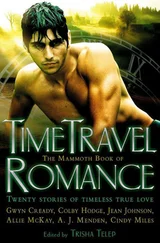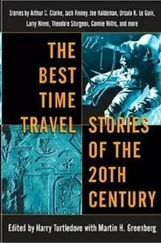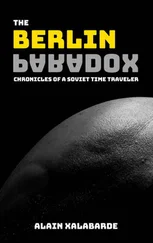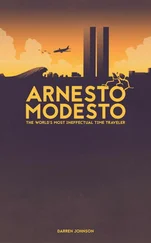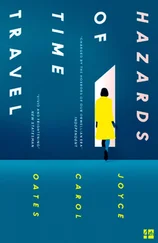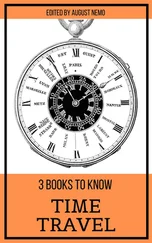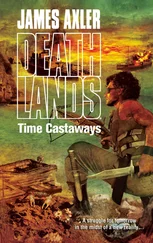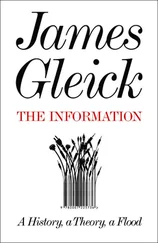James Gleick - Time Travel
Здесь есть возможность читать онлайн «James Gleick - Time Travel» — ознакомительный отрывок электронной книги совершенно бесплатно, а после прочтения отрывка купить полную версию. В некоторых случаях можно слушать аудио, скачать через торрент в формате fb2 и присутствует краткое содержание. Год выпуска: 2016, Издательство: Knopf Doubleday Publishing Group, Жанр: Старинная литература, на английском языке. Описание произведения, (предисловие) а так же отзывы посетителей доступны на портале библиотеки ЛибКат.
- Название:Time Travel
- Автор:
- Издательство:Knopf Doubleday Publishing Group
- Жанр:
- Год:2016
- ISBN:нет данных
- Рейтинг книги:5 / 5. Голосов: 1
-
Избранное:Добавить в избранное
- Отзывы:
-
Ваша оценка:
- 100
- 1
- 2
- 3
- 4
- 5
Time Travel: краткое содержание, описание и аннотация
Предлагаем к чтению аннотацию, описание, краткое содержание или предисловие (зависит от того, что написал сам автор книги «Time Travel»). Если вы не нашли необходимую информацию о книге — напишите в комментариях, мы постараемся отыскать её.
Time Travel — читать онлайн ознакомительный отрывок
Ниже представлен текст книги, разбитый по страницам. Система сохранения места последней прочитанной страницы, позволяет с удобством читать онлайн бесплатно книгу «Time Travel», без необходимости каждый раз заново искать на чём Вы остановились. Поставьте закладку, и сможете в любой момент перейти на страницу, на которой закончили чтение.
Интервал:
Закладка:
True, there were the beginnings of artificial memory; but these were large, bulky machines, troublesome to operate and maintain, and used only in the most limited, narrow way. They were called “electronic brains,” an exaggeration comprehensible only in the historical perspective.
The world’s economic systems depended utterly on papyr for regulation and control. Education, work, travel, and finance—all were thrown into disarray when the papyr turned ash. “Panic hit the cities; people, deprived of their identity, lost their reason.” After the Great Collapse came the long, dark epoch called the Chaotic. Wandering hordes abandoned the cities. Construction halted (no blueprints). Illiteracy and superstition became universal. “The more complex a civilization,” the archeologists note, “the more vital to its existence is the maintenance of the flow of information; hence the more vulnerable it becomes to any disturbance in that flow.” Now, and for centuries to come, anarchy prevailed.
This far-future cosmic archeological perspective frames the nearer-future narrative, which we are meant to understand was written in the last days of papyr. The narrator himself seems to be a bewildered civilian navigating a paranoid military bureaucracy. We readers, knowing what we know about the sad fate in store for the written word, may smile grimly as clerks stamp index cards “classified,” documents tumble from mail chutes, envelopes shoot through pneumatic tubes, dog-eared folders vanish into metal safes, and paper tape snakes from computers. Of course, we recognize our own world, too.
Rambling deeper and deeper into the labyrinth, the narrator stumbles upon a room full of books: “gray, crumbling” books on dusty, sagging shelves. It is the Library. A balding, shuffling, bespectacled, cross-eyed old man seems to be in charge. He presides over a catalogue of green, pink, and white cards “in no apparent order,” stuffed into “endless rows of drawers, their labels framed in brass.” On one desk the narrator finds an encyclopedia of heavy black volumes, one lying open to “ORIGINAL SIN—the division of the world into Information and Misinformation.” The narrator staggers, dizzy in this darkness broken only by a few naked bulbs. He is overwhelmed by the books’ mildewy stench: “this heavy, nauseating breath of the moldering centuries.” The old librarian keeps offering him dusty volumes: Basic Cryptology; Automated Self-Immolation; “Ah, here is Homo Sapiens As a Corpus Delicti, a splendid work, splendid…” When he finally escapes this paranoid nightmare of a library, he feels as if he has stepped out of a slaughterhouse.
He is aimless and tired. He keeps looking for orders or instructions. They are not forthcoming. “And so my future remained unknown to me,” he muses, “almost as if it hadn’t been written down in any ledger anywhere.” But we know that his terminal bathtub awaits. He is about to become a time capsule.
*1 So named to preserve the memory of William Randolph Hearst’s mother.
*2 Why 8113? Jacobs performed some numerology. He reckoned that 6,117 years had passed since the first year of recorded history, which he decided was 4241 BC, according to the Egyptian priestly calendar. Setting 1936 as a midpoint, he did the math and got 8113. It is common for time-capsule buriers to imagine themselves at “the midpoint” of history.
*3 1939 + 5,000.
*4 Full title: The Book of Record of the Time Capsule of Cupaloy Deemed Capable of Resisting the Effects of Time for Five Thousand Years; Preserving an Account of Universal Achievements, Embedded in the Grounds of the New York World’s Fair, 1939.
*5 Her odd and grandiose wish was granted: she persuaded the Capitol to put the safe in a storeroom under the east steps, and in 1976 the chief magistrate—Gerald R. Ford—was happy to pose for photographers while receiving Mrs. Diehm’s offering.
*6 “Izlel je Delyo Haydutin,” or “Delyo the Hajduk Has Gone Outside.”
*7 “Once again I was walking alone down endless corridors, corridors that continually branched out and converged, corridors with dazzling walls and rows of white, gleaming doors….An endless white labyrinth lay in wait out there, I knew, and an equally endless wandering. The net of corridors, halls and soundproof rooms, each ready to swallow me up…the thought made me break out in a cold sweat.”
TEN
Backward
There are no compasses for journeying in time. As far as our sense of direction in this unchartable dimension is concerned, we are like lost travellers in a desert.
—Graham Swift (1983)
IF YOU COULD take one ride in a time machine, which way would you go?
The future or the past? Sally forth or turn back? (“Right then, Rose Tyler, you tell me,” says the Doctor. “Where do you want to go? backwards or forwards in time. It’s your choice. What’s it going to be?”) Do you prefer the costumed pageant of history or the technomarvels to come? It seems there are two kinds of people. Both camps have their optimists as well as their pessimists. Disease is a worry. Time traveling while black or female poses special hazards. Then again, some people see ways to make money at lotteries, stock markets, and racetracks. Some just want to relive past loves. Many back travelers are driven by regret—mistakes made, opportunities lost.
You may wonder about the rules of this game. Is safety guaranteed? Can you take anything with you? *1At the very least, presumably, you carry your awareness and your memories, if not a change of clothing. Will you be a passive observer or can you change the course of history? If you change history, does that change you, in turn? “History makes you what you are,” says an armchair philosopher in Dexter Palmer’s 2016 novel, Version Control. “And if you traveled back in time you wouldn’t get to be you anymore. You would have a different history, and you would become someone else.” The rules keep changing, it seems.
Wells, though he later published not one but two histories of the world, had no interest in sending his Time Traveller backward. He plunged forward, then forward again, on to the end of time. But it didn’t take long for other writers to see other possibilities. Edith Nesbit, a friend of Wells’s, was a forward-looking, free-thinking fellow socialist, but when she got her chance, the past was the place for her. Writing under the gender-free name of E. Nesbit, she was commonly said to be an author of children’s books. Generations later, Gore Vidal took issue with that categorization: he said children were the heroes of her books, but don’t be fooled, they are not her ideal readers. He compared her to Lewis Carroll: “Like Carroll, she was able to create a world of magic and inverted logic that was entirely her own.” He thought she should be more famous.
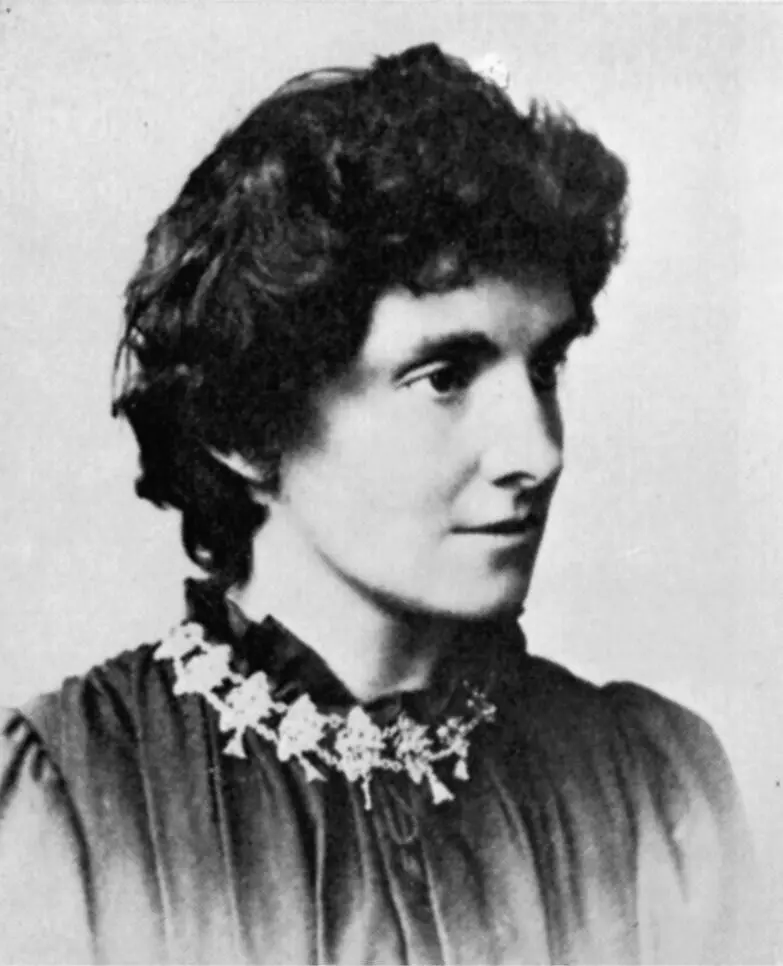
Credit 10.1
Wells often visited the household over which she presided with her husband, Hubert Bland. “The quicksilver wife” is how he perceived her, alongside “the more commonplace, argumentative cast-iron husband.” He thought Hubert was something of a fraud, not as bright as Edith, unable to support the family (she did that, with her writing), and a “Seducer”: “The astonished visitor came to realize that most of the children of the household were not E. Nesbit’s but the results of Bland’s conquests…” *2E. Nesbit became one of the first English writers to explore the new possibilities of time travel. She did not bother with science. There is no machinery, only magic. And where Wells looked forward, she looked back.
Her strange tale The Story of the Amulet, written in 1906, begins with four children—Cyril, Robert, Anthea, and Jane—moping through a long summer holiday. They have been left alone in London with old Nurse. Father is in Manchuria and mother in Madeira. They are deprived of liberty and primed for adventure.
Читать дальшеИнтервал:
Закладка:
Похожие книги на «Time Travel»
Представляем Вашему вниманию похожие книги на «Time Travel» списком для выбора. Мы отобрали схожую по названию и смыслу литературу в надежде предоставить читателям больше вариантов отыскать новые, интересные, ещё непрочитанные произведения.
Обсуждение, отзывы о книге «Time Travel» и просто собственные мнения читателей. Оставьте ваши комментарии, напишите, что Вы думаете о произведении, его смысле или главных героях. Укажите что конкретно понравилось, а что нет, и почему Вы так считаете.


